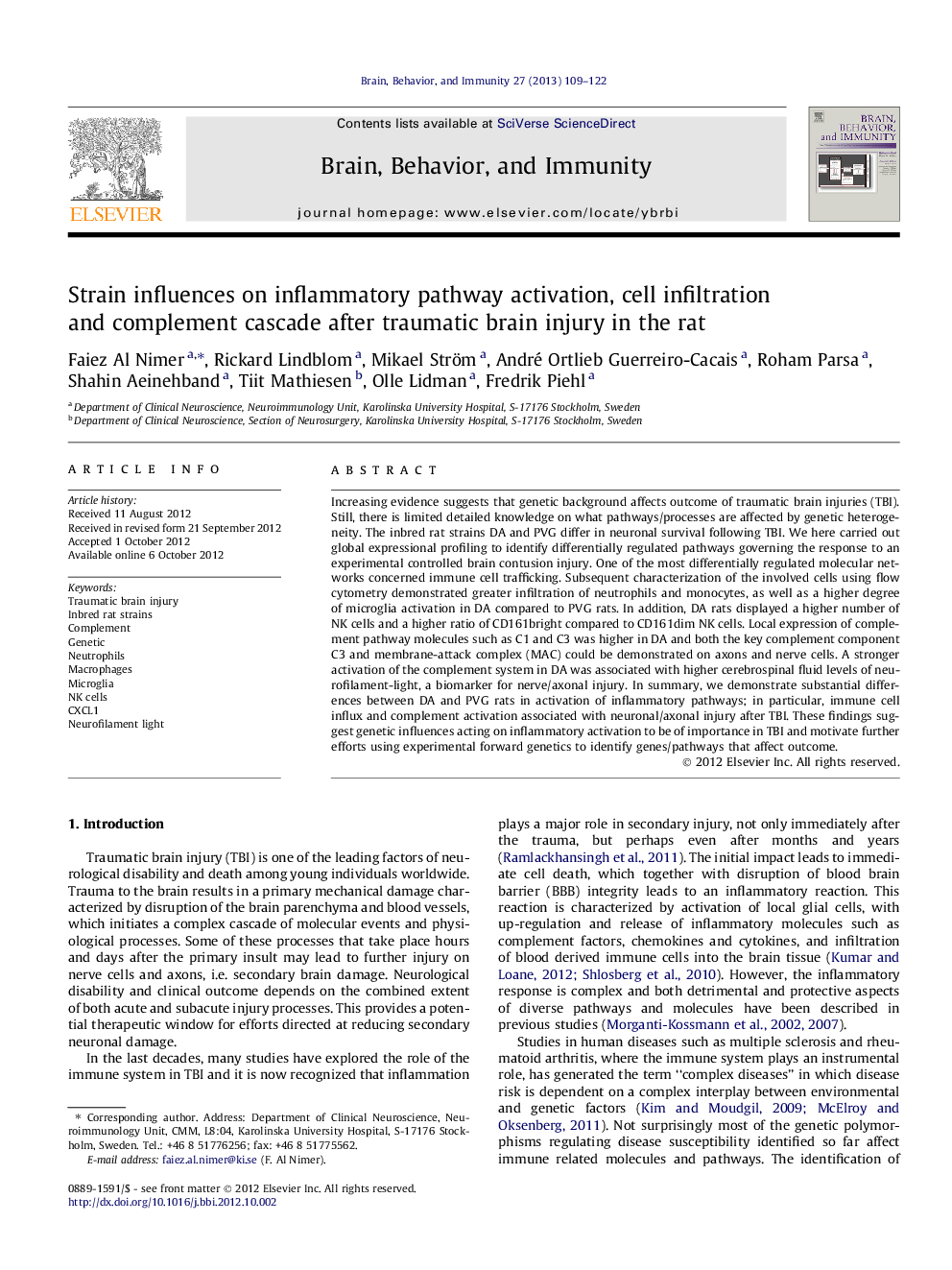| Article ID | Journal | Published Year | Pages | File Type |
|---|---|---|---|---|
| 922229 | Brain, Behavior, and Immunity | 2013 | 14 Pages |
Increasing evidence suggests that genetic background affects outcome of traumatic brain injuries (TBI). Still, there is limited detailed knowledge on what pathways/processes are affected by genetic heterogeneity. The inbred rat strains DA and PVG differ in neuronal survival following TBI. We here carried out global expressional profiling to identify differentially regulated pathways governing the response to an experimental controlled brain contusion injury. One of the most differentially regulated molecular networks concerned immune cell trafficking. Subsequent characterization of the involved cells using flow cytometry demonstrated greater infiltration of neutrophils and monocytes, as well as a higher degree of microglia activation in DA compared to PVG rats. In addition, DA rats displayed a higher number of NK cells and a higher ratio of CD161bright compared to CD161dim NK cells. Local expression of complement pathway molecules such as C1 and C3 was higher in DA and both the key complement component C3 and membrane-attack complex (MAC) could be demonstrated on axons and nerve cells. A stronger activation of the complement system in DA was associated with higher cerebrospinal fluid levels of neurofilament-light, a biomarker for nerve/axonal injury. In summary, we demonstrate substantial differences between DA and PVG rats in activation of inflammatory pathways; in particular, immune cell influx and complement activation associated with neuronal/axonal injury after TBI. These findings suggest genetic influences acting on inflammatory activation to be of importance in TBI and motivate further efforts using experimental forward genetics to identify genes/pathways that affect outcome.
Highlight► Genetic heterogeneity influences the inflammatory response and neurodegeneration in traumatic brain injury.
